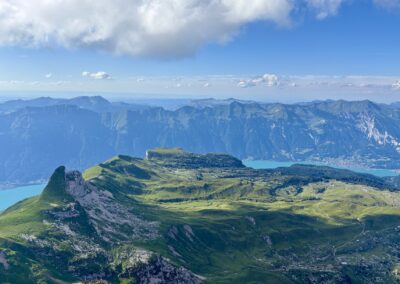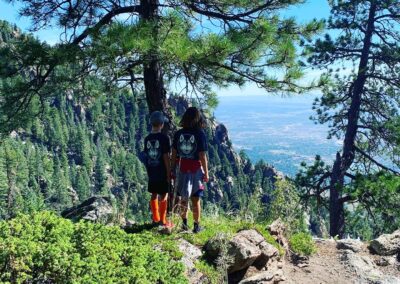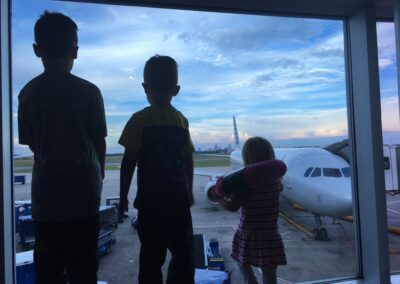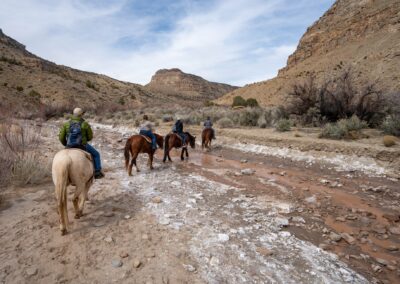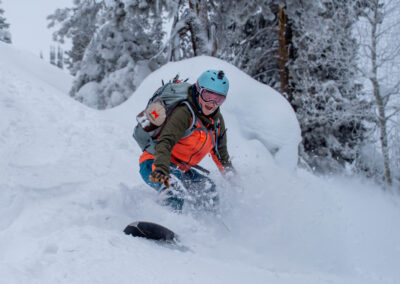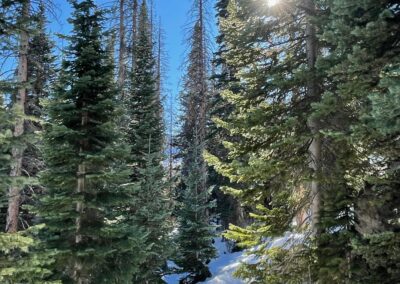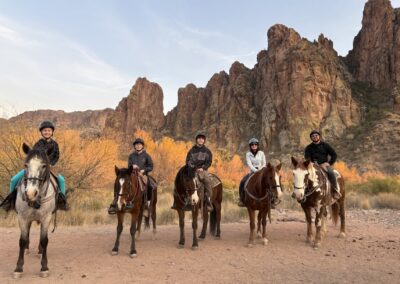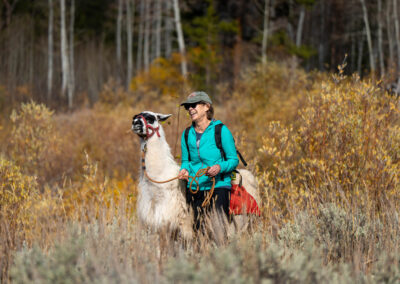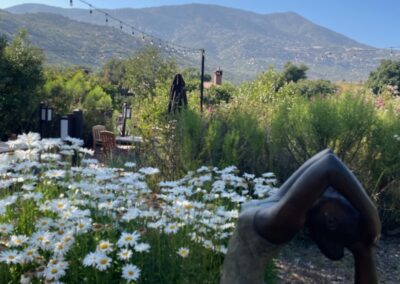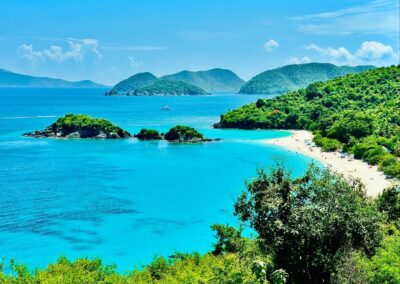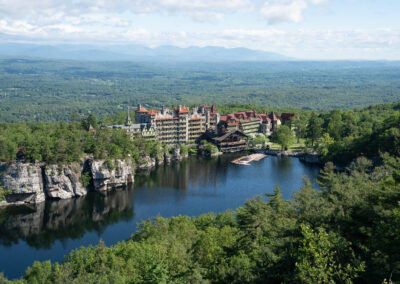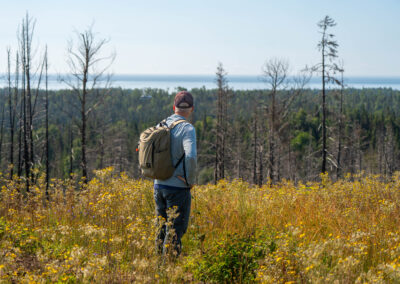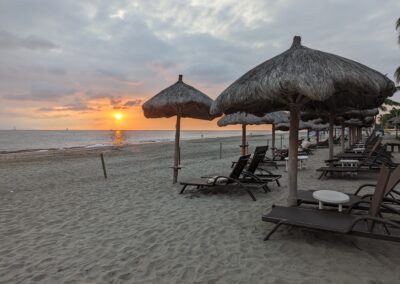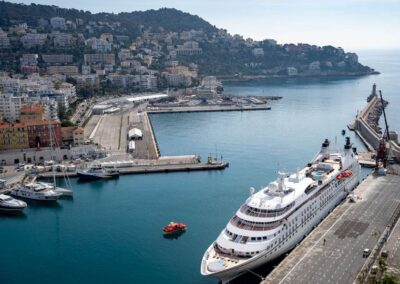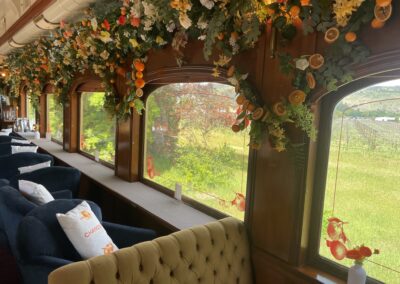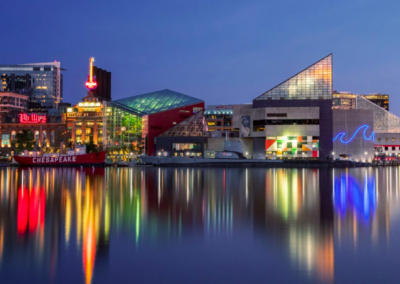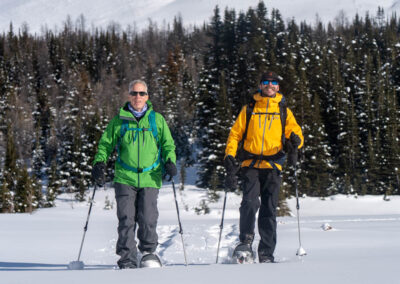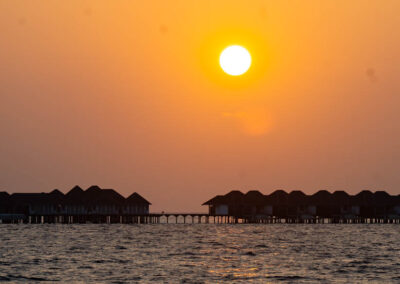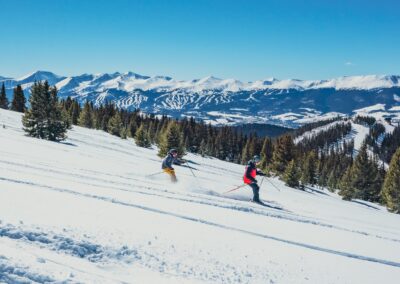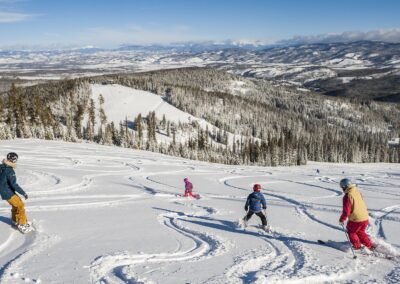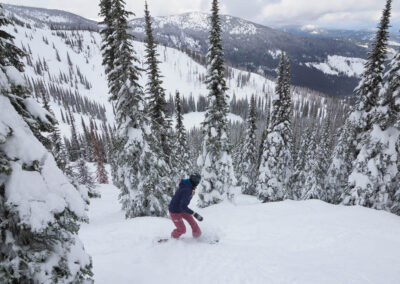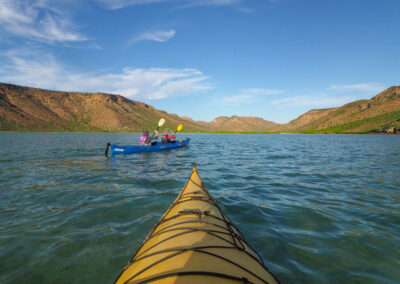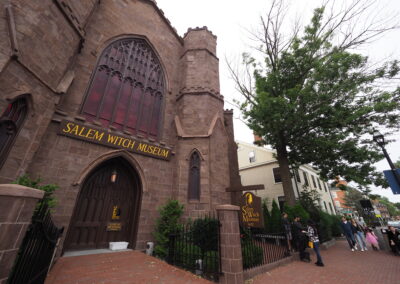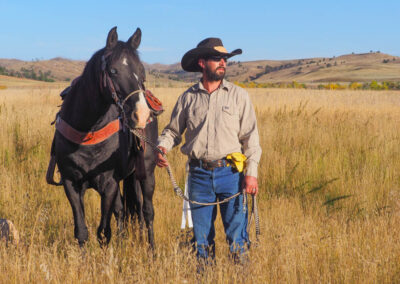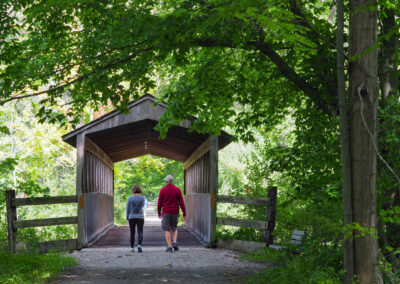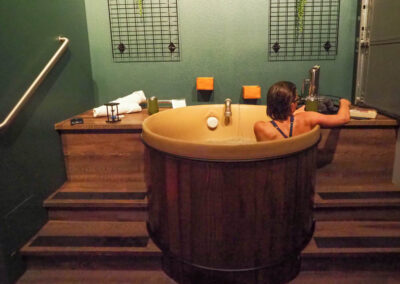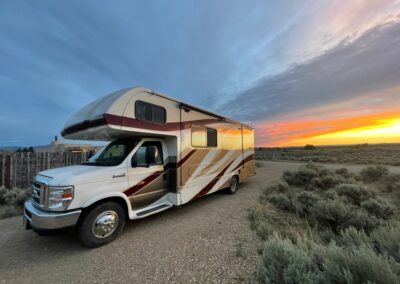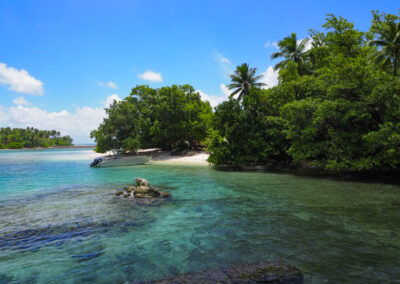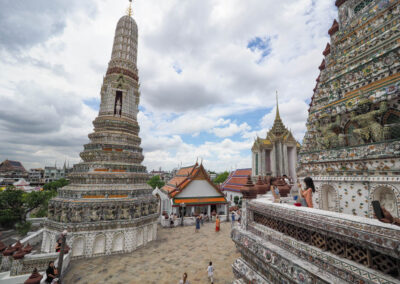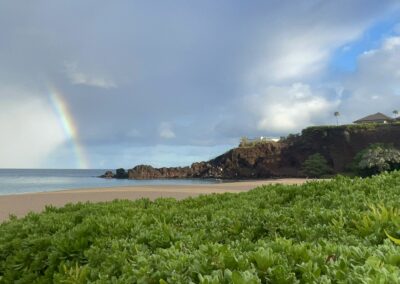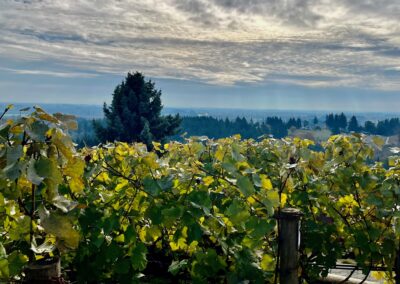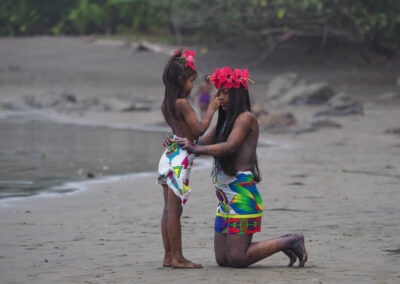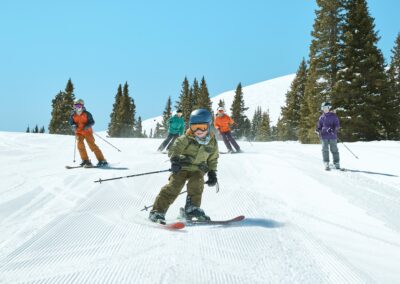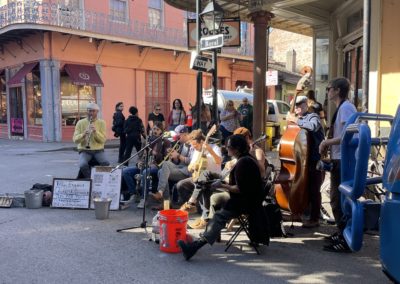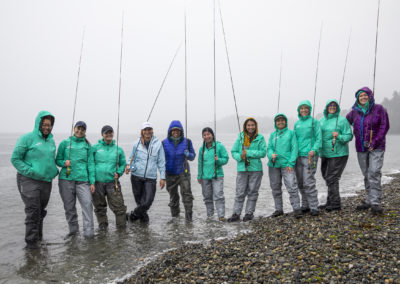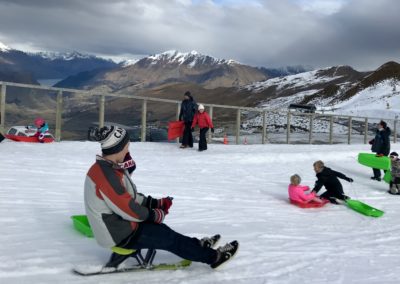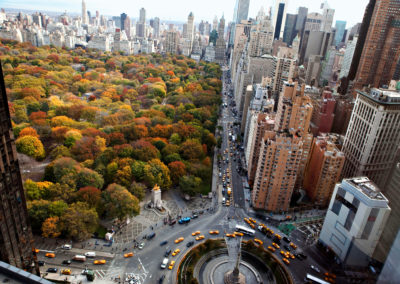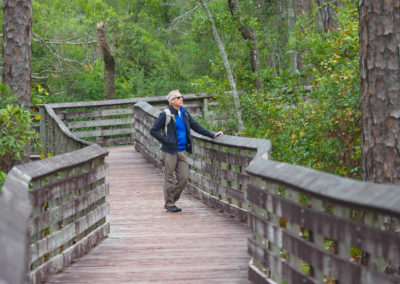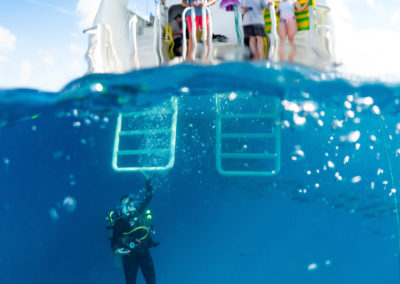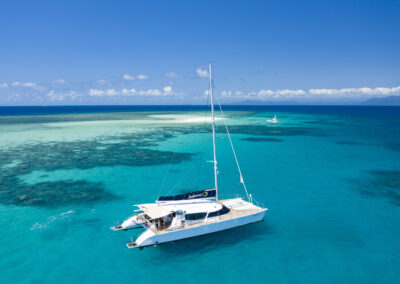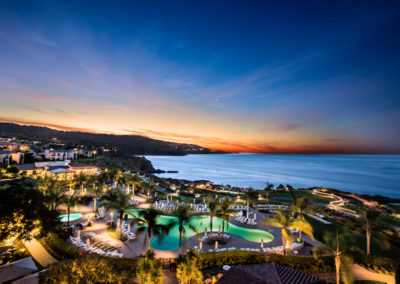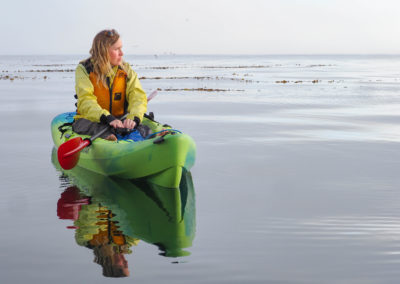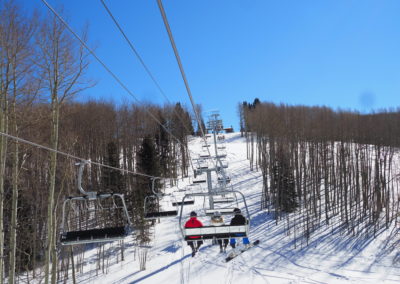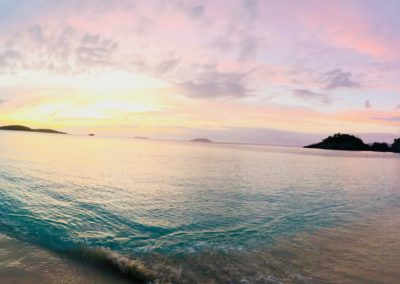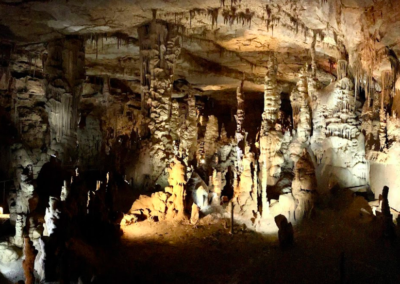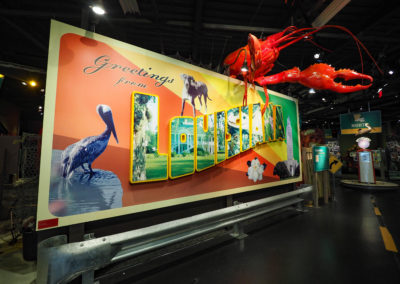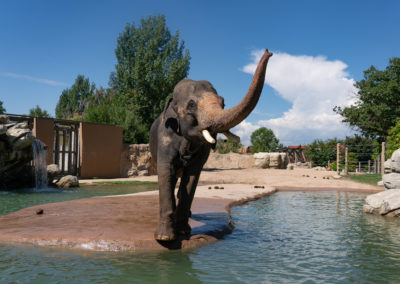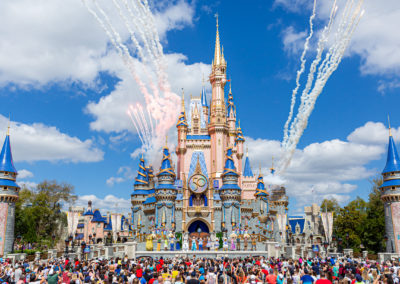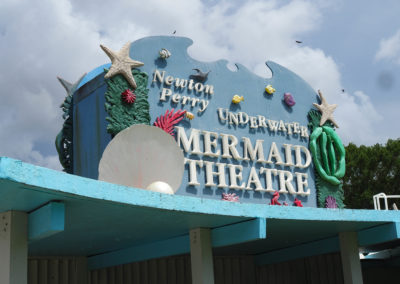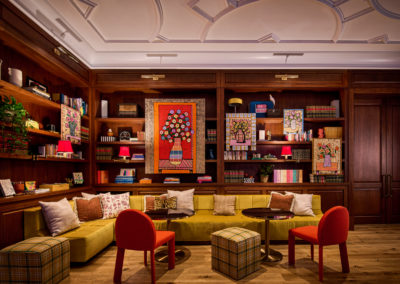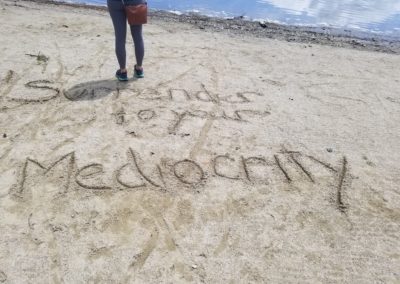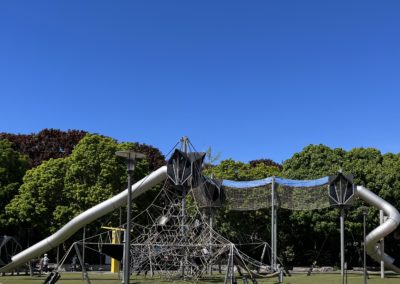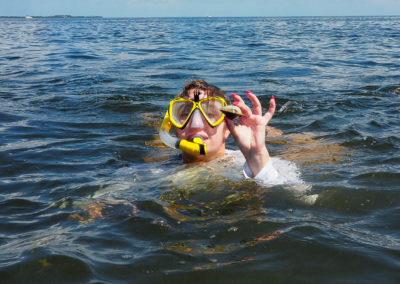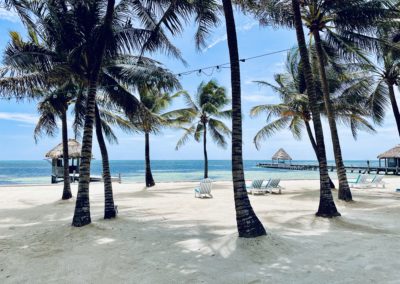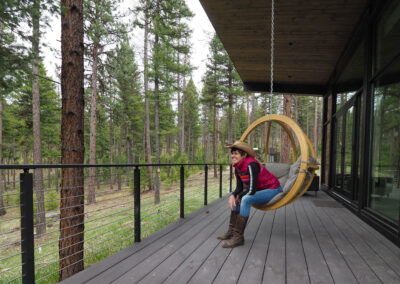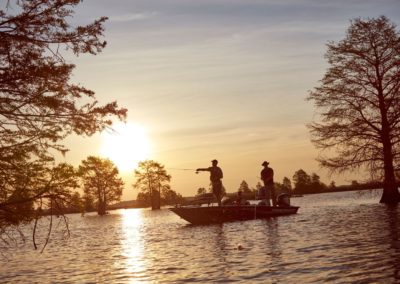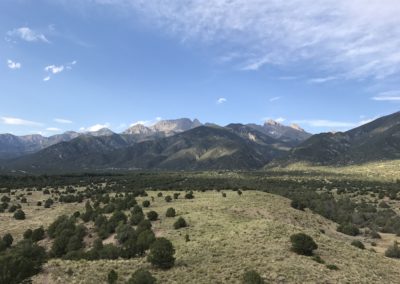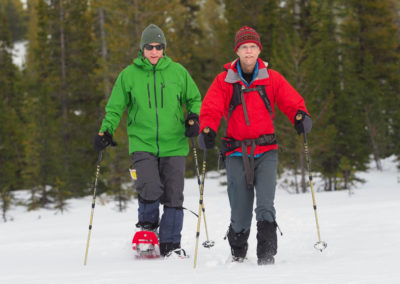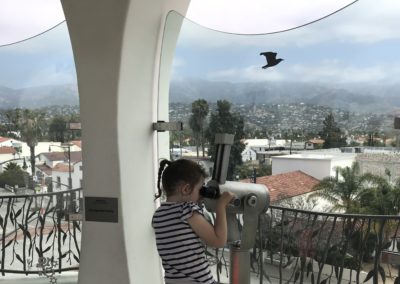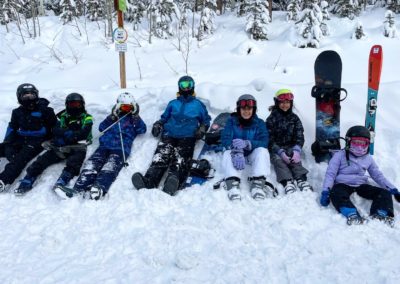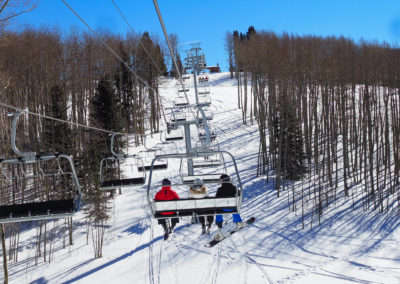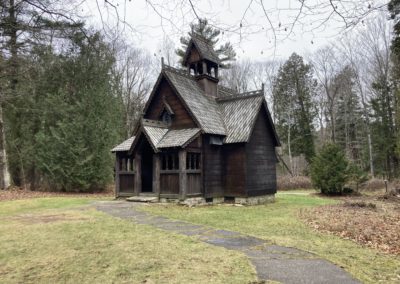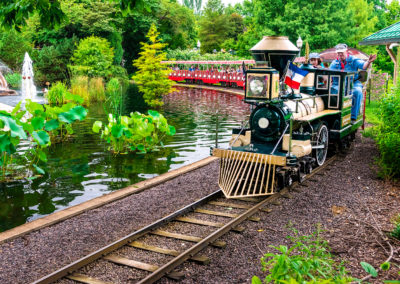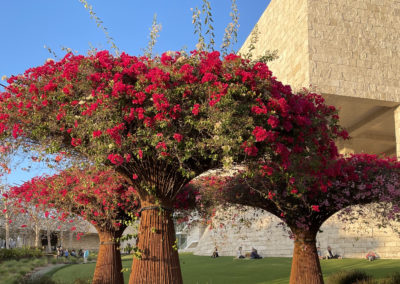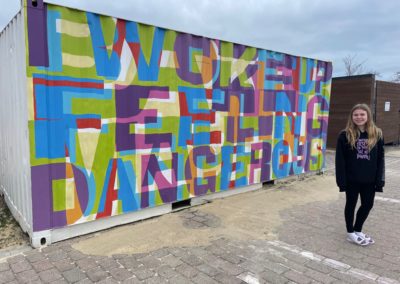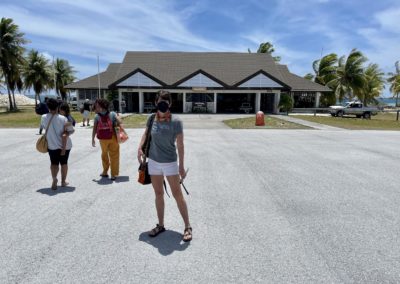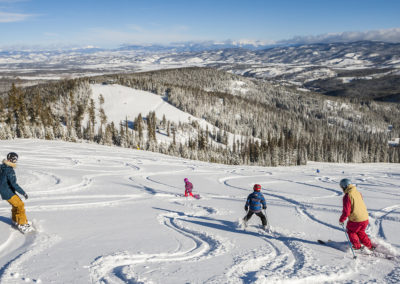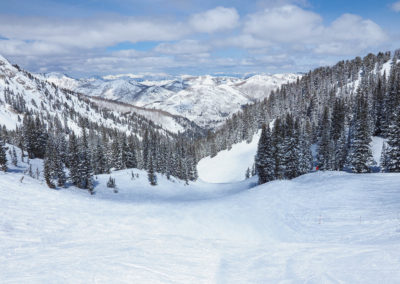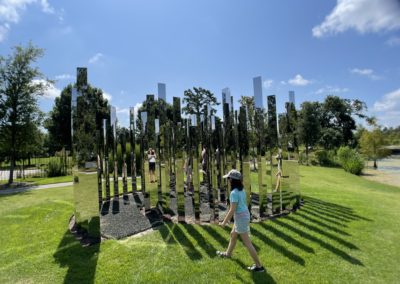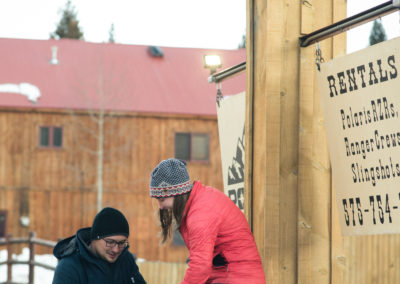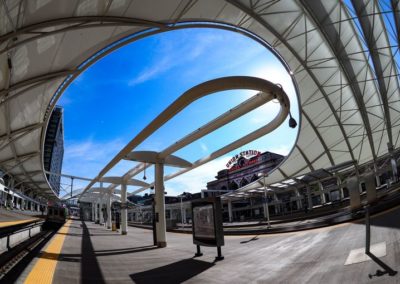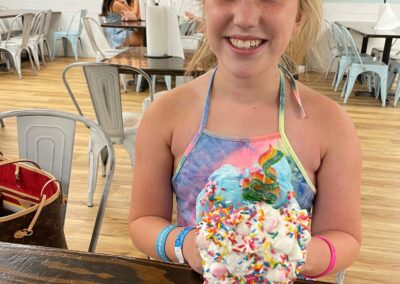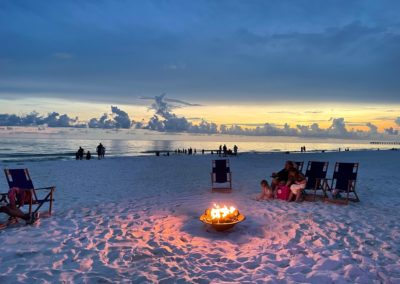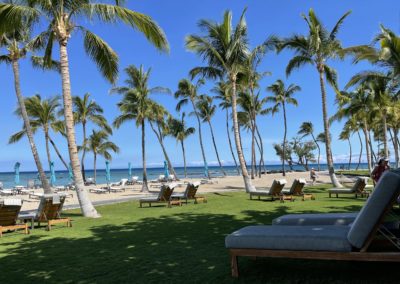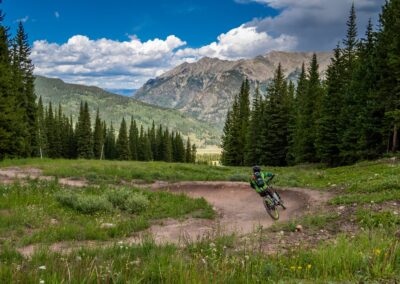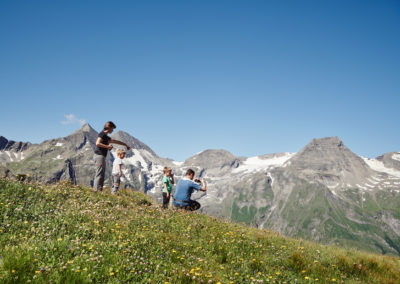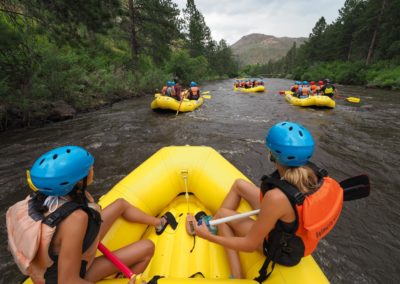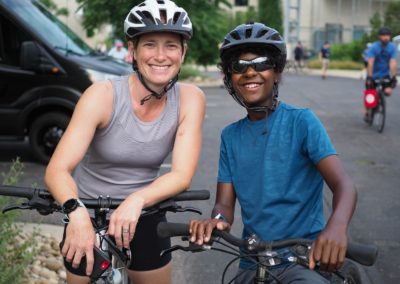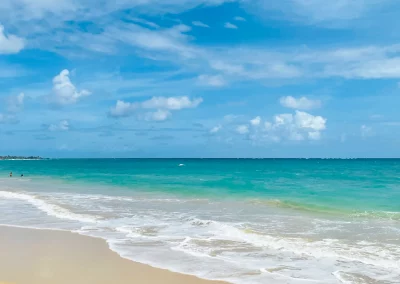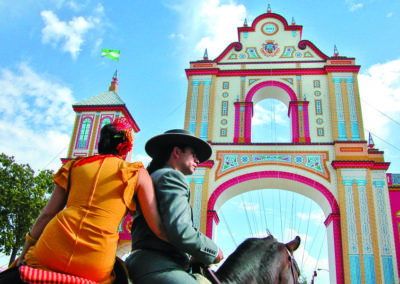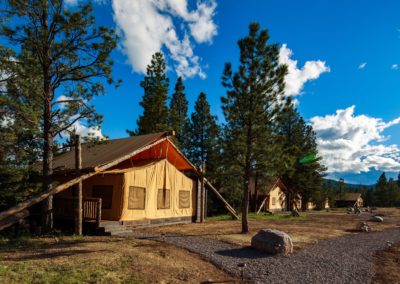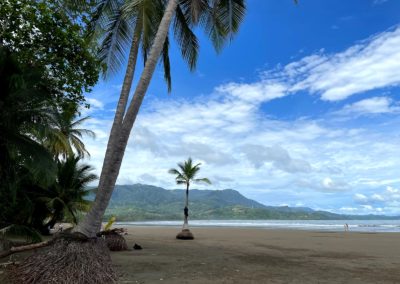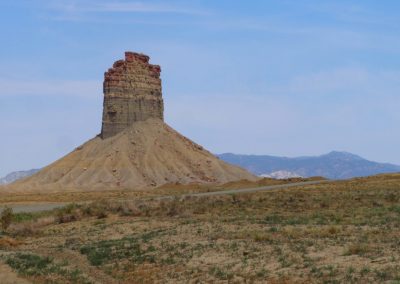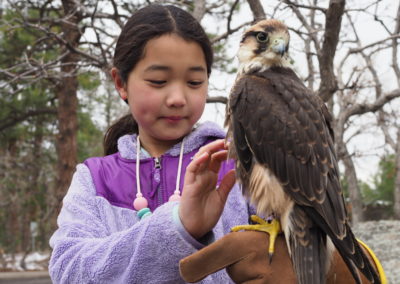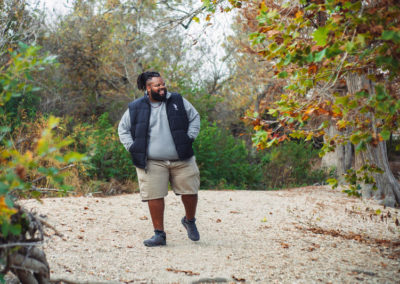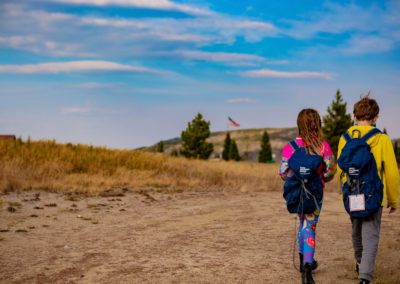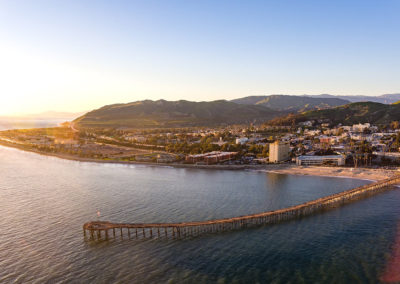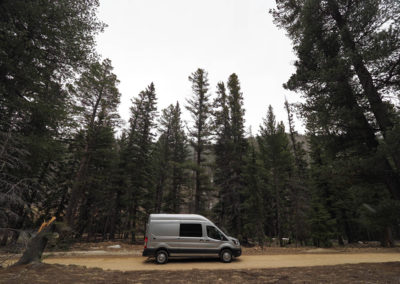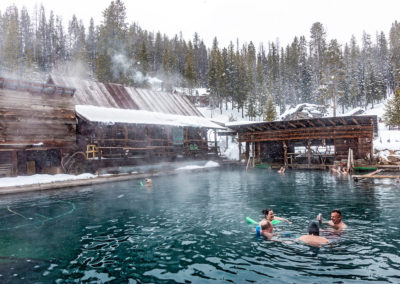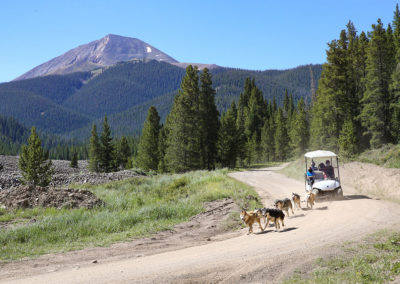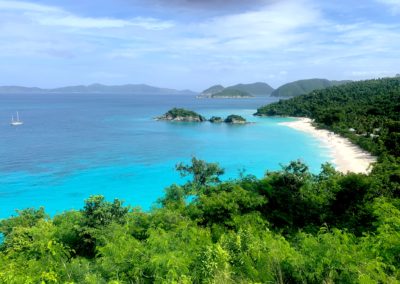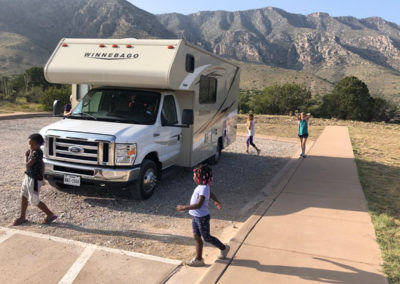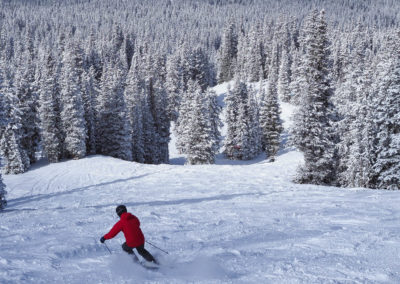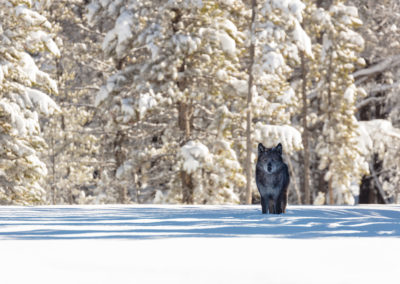
The sun sets behind CanoeHouse on Hawaii. Photo by Melanie Moore
“Is this a girls’ trip?” our server asked, winking, before taking our cocktail orders at the poolside restaurant. Four women in our 50s vacationing at a posh Hawaiian beach resort could only be escaping kids and husbands.
But our kids are living on their own, mostly. Husbands, none. We are two lesbian couples, married legally – our friends in California in 2014; us in Texas, November 2015. Some people think that Hawaii was the first to legalize same-sex marriage, but that crown goes to Vermont. Hawaii became the 15th in 2013. LGBTQ, yes, but as white women staying at the Mauna Lani on the Big Island of Hawaii, our summer trip to Kona felt sharply dichotomous, perhaps because I was reading Bad Feminist, the 2014 essay collection from author, professor, and social commentator Roxane Gay.
Tourists surge toward Hawaii
We’d booked our Hawaii vacation in lieu of an already-postponed Croatia trip. We needed an escape. Given the current pandemic, domestic travel seemed best. We weren’t the only ones with this idea – flights, hotels, and restaurants were full. Rumors of no rental cars proliferated but proved untrue.
So much had shut down during Covid, that now the entire travel and hospitality industry was lurching into a rapid escalation, with hoards of recently-vaccinated tourists clamoring for trips. We were travelling with our best friends and, from Facebook and conversations, learned of more than six other couples from Austin heading to the Aloha state. From March to June, Hawaii’s visitation almost doubled to 791,053 people. Most were from the U.S., with more than two thirds from the western states alone, according to the Hawaii Tourism Authority.
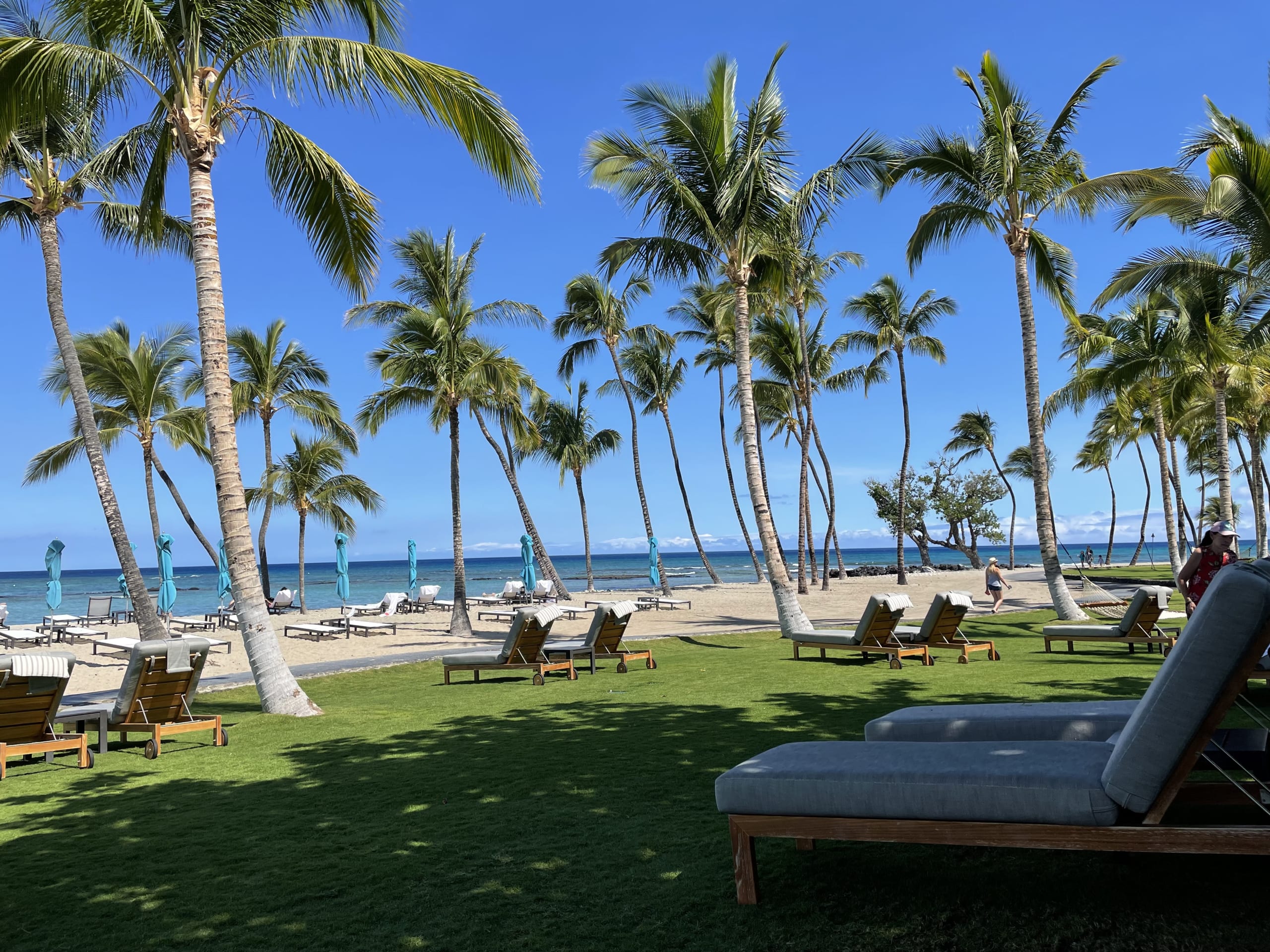
Chairs line the beach at the Mauna Lani in Hawaii. Photo by Melanie Moore
Vacation, especially a Hawaiian vacation, is a state of mind, an idea. It’s escaping, but being present. It’s being in a very real place where it makes a difference to be present in your very real body with your very real wife and friends. Before you go, you imagine yourself relaxing in the resort’s chaise lounges, as pictured on the website. The reality is, one of us had to get up early each morning to put stuff on chairs in order to get the spot on the beach we wanted (for us, under a shady tree).
Remember the culture in Hawaii
Vacationing in Hawai’i is remembering and forgetting, learning about the native culture and prostituting it.
I ordered a Mai Tai, loved it, and researched the cocktail to find that, of course, two white guys argue over who invented it. Generally, Victor J. Bergeron, better known as Trader Vic, gets credit, but Donn Beach has claimed the recipe came from a punch he invented in 1933, the Q.B. Cooler. Legend has it that Vic served it to visiting Tahitian friends who exclaimed, “Maita’I roa a’e.” That allegedly translates to “Out of this world! The best!” The story goes that the Mai Tai (i.e. The Best!) cocktail became so popular in the 1940s and 50s that it depleted worldwide supplies of aged Jamaican rum. Tiki bars and the Mai Tai were iconic Hawaiian vacation totems for me, but I felt conflicted enjoying them in our current moment of reckoning with colonialism.
Read more: Pondering a post-vaccinated trip to Puerto Rico?
“Hawaiian culture is commonly commodified,” said my friend Dr. Nichole Prescott, assistant vice chancellor of the University of Texas System, herself a Native American from Myaamia. We were discussing our trips to Hawaii. She and her wife were on Maui the same week we were on Hawaii, although no one asked them about a girls’ trip. “The history (of Hawaii) is scandalous; settler colonialism and imperialism need to be called out,” she said. “Be an educated traveler. Don’t just consume the culture. Ask yourself how you can experience a culture and give back.” She noted the irony of the missionary and military history in Hawai’i, intruding, ostensibly, to save and protect it.
Protecting Hawaii’s environment
Visiting Hawai’i is hearing about preservation of the reef and marine life and participating in its overuse.
We were among the minority using the “reef-safe” sunscreen the state recommends. Snorkeling at Kealakekua Bay, where I first snorkeled 17 years ago, had changed. Once, I’d kayaked across the bay with a magnificent escort of spinner dolphins. This time, a private snorkel boat took us to an unrecognizably crowded Kealakekua Bay, which is only accessible by a difficult hike or by boat. A traffic jam of boats, and the mass of snorkelers they’d disgorged, obscured surface views of the reef near the Captain Cook monument. It looked like a crowded public pool, swarming with people.

Visitors to a seahorse farm in Hawaii can get an unclose view of the creatures. Melanie Moore photo
Several initiatives to preserve endangered species offer field-trippy educational opportunities.
We visited the Ocean Rider Seahorse Farm, where biologists are working to save endangered wild seahorses. One way they do this is by selling a newly-developed breed of “pet” seahorse that can survive in home aquariums. That discourages people from harvesting and selling the endangered wild seahorses. Oceanrider only sells them in pairs, because seahorses are very social and will die of loneliness if separated. Wild seahorses can only eat live food, which is why wild ones sold as pets die within a few weeks. The newly-developed breed has adapted to eating not-so-alive shrimp.
We didn’t visit the octopus farm down the road, but it conducts similar conservation activities. Both are located near OTEC, Makai Ocean Engineering’s ocean thermal energy conversion power plant. The plant shares the very cold deep sea water that the farms need to sustain their seahorses and octopi.
At the Mauna Lani resort itself, an education program fosters born-in-captivity sea turtle hatchlings, releasing them each July 4 (Turtle Independence Day). The turtles, tracked via tags, have been found on all the Hawaiian islands and as far away as California. The Mauna Lani program is experimenting with less-invasive tagging using facial recognition technology, taking photos of the turtles at regular intervals as they grow.
Hawaii beyond the Mauna Lani’s gates
We drove south to Ka Lae (South Point), the southernmost tip of Hawaii and, therefore, of the 50 states. It’s a long drive through dry, windy terrain that looks like West Texas, with cows, horses, and windmills. At Ka Lae, we peered over the cliff where the brave can jump. We didn’t see anyone take the leap, but watched a lone snorkeler below and locals fishing from the cliff.
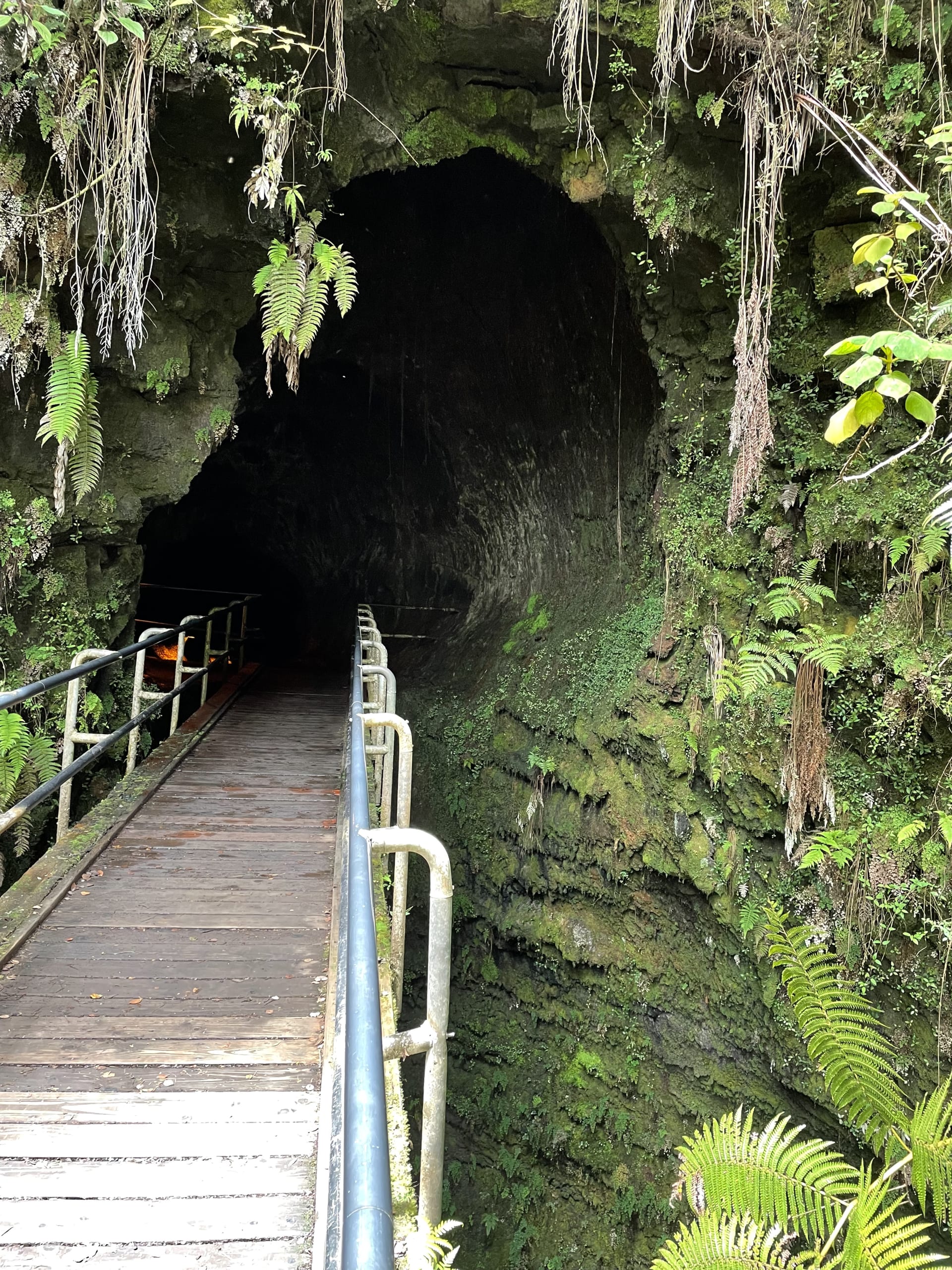
Ferns grow around the entrance to a lava tube at Hawaii Volcanoes National Park. Photo by Melanie Moore
Driving east to Volcano National Park, we saw the Halema’uma’u Crater, though no active lava has been visible since early spring. We did the 1.5-mile Nahuku walk through the Thurston Lava Tube, where lava flowed 500 years ago. From the Nahuku trail, we could see the Kilauea Iki Crater, where you can descend 400 feet and hike across a hardened lava lake formed during the 1959 eruption. In total there are six short walks at the park, including one wheelchair-accessible trail.
Food in Hawaii with a Texas connection
Though restaurant reservations were scarce, we had dinners with, of all things, Texas connections.
The CanoeHouse restaurant at the Mauna Lani wowed us with you-gotta-see-it-to-believe-it views of the sunset every evening. The menu featured interesting takes on local seafood and vegetables. The five-course tasting “MY” menu from Matt and Yuka Raso, the chef and general manager couple who created it, is terrific. Matt was previously head chef at Nobu in Dallas. We found excellent “strip-center sushi” at Kenechi Pacific, which used to have an Austin location and still has one in Dallas. Ali Singleton, their award-winning bar manager, makes a “New Fashion” cocktail with Redemption Rye, honey, and yuzu that’s worth a return trip.
Read more: Music lovers – book a room at the Elizabeth Hotel in Fort Collins
The next day, after snorkeling, we enjoyed more casual food at Magic’s Beach Grill on “magic beach.” The beach loses sand after storms, but over time the sand magically reappears. Our snorkel boat captain recommended the hurricane tots, which were unbelievably crispy, despite all the toppings – sweet shoyu glaze, bacon, jalapeno, parmesan, furikake, firecracker sauce, and umami aioli.
Hawaii’s discordant Goop
But perhaps the most discordant example of what a visit to Hawaii can become was the Goop store in our hotel. Roxanne Gay termed the shop a retail outlet for Gwyneth Paltrow’s “medically unsound, Goopy advice” in a 2018 Vox interview. We wandered past gilded Birkenstocks, size 0 clothes, and Goop fragrances, famous for their outrageousness and displayed like jewelry on illuminated glass shelves. The lineup included bottles of “This is what my orgasm smells like,” and “This is what my vagina smells like.”
Whiffing the floral aroma, my wife said, “I’m pretty sure that’s not what it smells like.”
Sporty activities, including hiking, pickleball, and (for me) swimming with Kona Aquatics Masters, kept us challenged and somewhat reality-based. Massages at the Mauna Lani were better than those at any resort we’d experienced.
A relaxing vacation? Absolutely. And still, at times, I was unsettled by the myriad ways I was silently complicit in white heteronormativity simply by succumbing to the pleasures of being pampered.
Maybe we all have some “bad feminist” tendencies.
If You Go

Getting there:
Governor David Ige has discouraged tourists from visiting Hawaii until the end of October, so plan your trip for late fall or this winter. When you do go, you must register through the Safe Travels Hawai’i Program with your Covid vaccine card and the mandatory State of Hawaii Travel and Health Form. Book a flight from Austin with a connection to Kona, then rent a car, use the shuttle, taxi, or bus to get to the Mauna Lani resort.

Stay:
Book a room at the Mauna Lani (An Auberge Resort Collection) hotel north of the airport on the Kona coast or at the Sheraton Kona Resort & Spa at Keauhou Bay, south of the airport.
Do:
Snorkel with dolphins, visit the Ocean Rider Seahorse Farm, and then drive south to shopping and restaurants in downtown Kona. Don’t miss Hawaii Volcanoes National Park.








